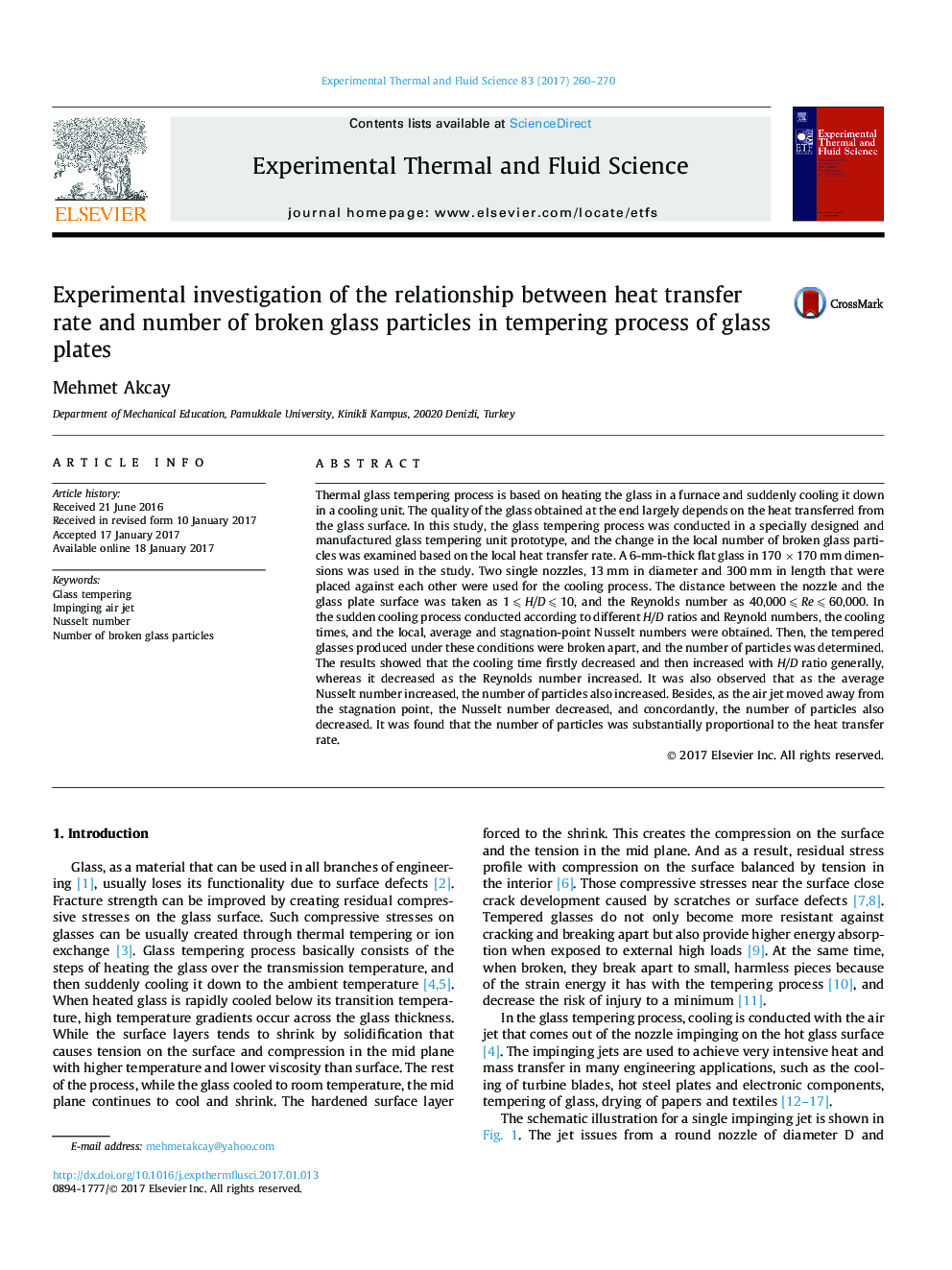| کد مقاله | کد نشریه | سال انتشار | مقاله انگلیسی | نسخه تمام متن |
|---|---|---|---|---|
| 4992736 | 1457393 | 2017 | 11 صفحه PDF | دانلود رایگان |
عنوان انگلیسی مقاله ISI
Experimental investigation of the relationship between heat transfer rate and number of broken glass particles in tempering process of glass plates
ترجمه فارسی عنوان
بررسی تجربی ارتباط سرعت انتقال حرارت و تعداد ذرات شیشه ای شکسته در فرایند خنک سازی صفحات شیشه ای
دانلود مقاله + سفارش ترجمه
دانلود مقاله ISI انگلیسی
رایگان برای ایرانیان
موضوعات مرتبط
مهندسی و علوم پایه
مهندسی شیمی
جریان سیال و فرایندهای انتقال
چکیده انگلیسی
Thermal glass tempering process is based on heating the glass in a furnace and suddenly cooling it down in a cooling unit. The quality of the glass obtained at the end largely depends on the heat transferred from the glass surface. In this study, the glass tempering process was conducted in a specially designed and manufactured glass tempering unit prototype, and the change in the local number of broken glass particles was examined based on the local heat transfer rate. A 6-mm-thick flat glass in 170 Ã 170 mm dimensions was used in the study. Two single nozzles, 13 mm in diameter and 300 mm in length that were placed against each other were used for the cooling process. The distance between the nozzle and the glass plate surface was taken as 1 ⩽ H/D ⩽ 10, and the Reynolds number as 40,000 ⩽ Re ⩽ 60,000. In the sudden cooling process conducted according to different H/D ratios and Reynold numbers, the cooling times, and the local, average and stagnation-point Nusselt numbers were obtained. Then, the tempered glasses produced under these conditions were broken apart, and the number of particles was determined. The results showed that the cooling time firstly decreased and then increased with H/D ratio generally, whereas it decreased as the Reynolds number increased. It was also observed that as the average Nusselt number increased, the number of particles also increased. Besides, as the air jet moved away from the stagnation point, the Nusselt number decreased, and concordantly, the number of particles also decreased. It was found that the number of particles was substantially proportional to the heat transfer rate.
ناشر
Database: Elsevier - ScienceDirect (ساینس دایرکت)
Journal: Experimental Thermal and Fluid Science - Volume 83, May 2017, Pages 260-270
Journal: Experimental Thermal and Fluid Science - Volume 83, May 2017, Pages 260-270
نویسندگان
Mehmet Akcay,
